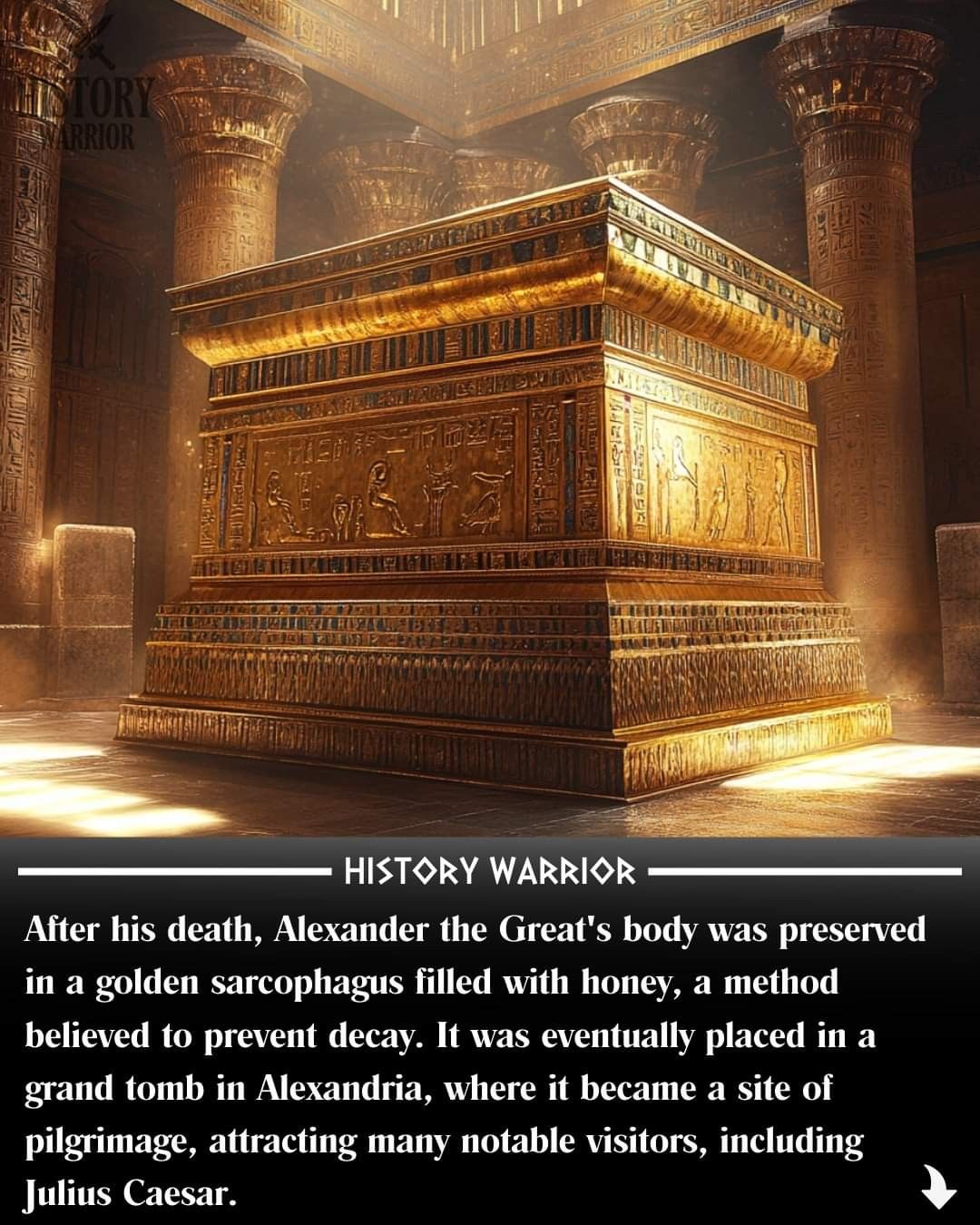The Golden Tomb of Alexander the Great: A Lost Legacy of Immortality 👑✨

The Golden Tomb of Alexander the Great: A Lost Legacy of Immortality 👑✨

After his death in 323 BCE, the body of Alexander the Great, the man who conquered empires and dreamed of uniting the world, was treated with divine reverence. Historical accounts tell us that his remains were preserved in honey, a method believed to prevent decay and symbolize immortality — for even in death, Alexander was seen not merely as a man, but as a god among kings 🍯👑.
His body was placed within a magnificent golden sarcophagus, later enclosed in a jewel-encrusted casket and displayed in a grand mausoleum in Alexandria, Egypt — the city he had founded himself. The tomb became a sacred site of pilgrimage for centuries. Great rulers and philosophers journeyed to gaze upon the resting place of the man who had once ruled from Greece to India. Among these visitors were Julius Caesar, Augustus, and other leaders who sought to draw inspiration from his legacy ⚔️🌍.
But over time, the tomb’s exact location was lost — hidden beneath the sands of war, flood, and empire. Alexandria changed hands countless times, and with each conquest, the trail of the Soma Tomb grew fainter. Today, archaeologists and historians still search for its remains, somewhere beneath the bustling streets of modern Alexandria — a legend waiting to be reborn beneath the earth 🏺🌅.
The story of Alexander’s golden tomb is more than a tale of grandeur — it is a reflection of humanity’s unending fascination with power, legacy, and the hope of eternal life. Though his empire fell, his dream endures, shining like gold in the memory of the world ✨🕊️.
#️⃣ #AlexanderTheGreat #LostTomb #AncientMysteries #AlexandriaEgypt #GoldenSarcophagus #WorldConqueror #HistoricalLegends #AncientEmpires #EternalLegacy #HistoryThatLives











